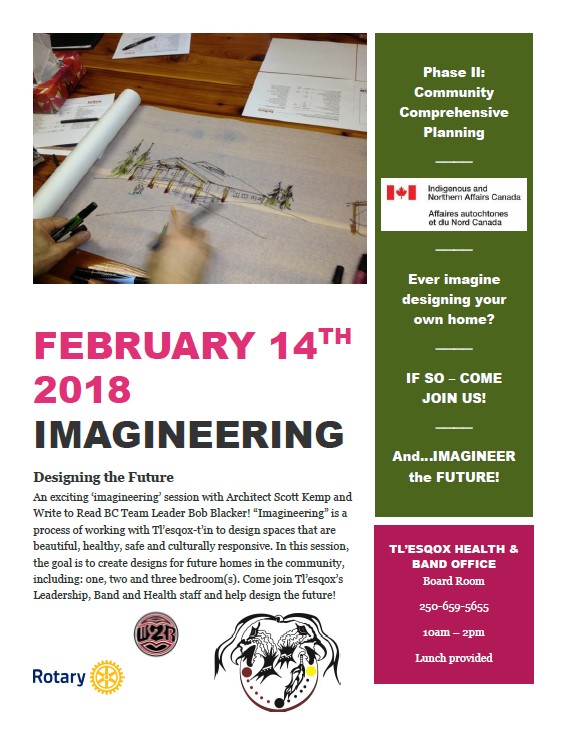 “Healthy and safe spaces make community.” The “Imagineering” session brings Write to Read BC Team back to it’s first community Tl’esqox – Toosey Indian Band. Architect Scott Kemp and Write to Read BC Team Leader Bob Blacker, join the Original Campion Sparkplug Shirley-Pat Chamberlain and the community of Tl’esqox to design the future.
“Healthy and safe spaces make community.” The “Imagineering” session brings Write to Read BC Team back to it’s first community Tl’esqox – Toosey Indian Band. Architect Scott Kemp and Write to Read BC Team Leader Bob Blacker, join the Original Campion Sparkplug Shirley-Pat Chamberlain and the community of Tl’esqox to design the future.
“Imagineering” is a process of working with Tl’esqox-t’in to design spaces that are beautiful, healthy, safe and culturally responsive. Our goal is to create designs for future homes in the community, including: one, two and three bedroom(s).
This opportunity for continued partnership, participation, and power sharing came about as part of the Phase II of the Tl’esqox Comprehensive Community Planning process, funded through INAC’s BC Capacity Initiative. Phase II’s priority is housing, focusing on policies, demographic data collection, current housing inspection, and designing culturally responsive homes.
The last point is key as potential houses coming into the Tsilhqot’in Nation as a result of negotiation with the Federal Government under the Tsilhqot’in Case aboriginal rights and title win in the Supreme Court will soon become a reality. Tl’esqox is being proactive so that the community is ready for any an all housing opportunities that present themselves. Tl’esqox and Write to Read BC Team are excited for this opportunity to imagineer the future!”

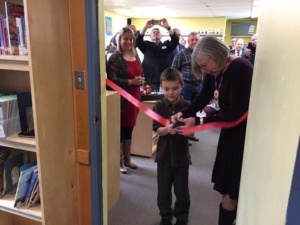 Students at Nanaimo’s Nisaika Kum’Tuks Elementary Centre no longer have to go far to find a good book.
Students at Nanaimo’s Nisaika Kum’Tuks Elementary Centre no longer have to go far to find a good book.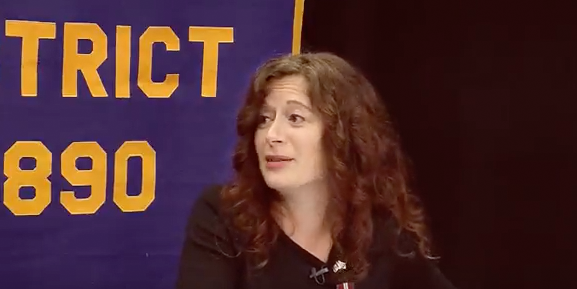


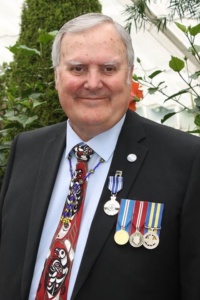 Ottawa:
Ottawa: 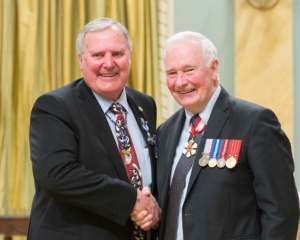 “So very proud of my friend, my mate – congratulations on receiving a meritorious service metal from the GG
“So very proud of my friend, my mate – congratulations on receiving a meritorious service metal from the GG 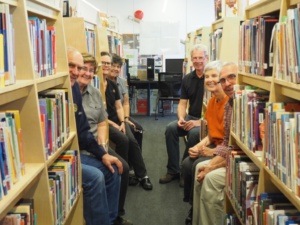 In late 2016 members of the W2R LIBRARY RESPONSE TEAM and MISSION AM ROTARY CLUB transported the first load of shelving for the library. Members of the team along with those from the community & Naomi White the ACADEMY LIBRARIAN were able to sort and get books onto the shelves. However there were many books left over and this second shipment to the ACADEMY will help get those books onto shelves. There is the final shipment of shelves to be sent to Lax Kwa’laams and these will be transported to the community by the end of June 2017. In addition to these shelves 4 HP ALL IN ONE COMPUTERS and 4 MINI IPADS will be sent at the same time.
In late 2016 members of the W2R LIBRARY RESPONSE TEAM and MISSION AM ROTARY CLUB transported the first load of shelving for the library. Members of the team along with those from the community & Naomi White the ACADEMY LIBRARIAN were able to sort and get books onto the shelves. However there were many books left over and this second shipment to the ACADEMY will help get those books onto shelves. There is the final shipment of shelves to be sent to Lax Kwa’laams and these will be transported to the community by the end of June 2017. In addition to these shelves 4 HP ALL IN ONE COMPUTERS and 4 MINI IPADS will be sent at the same time.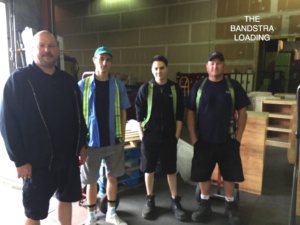
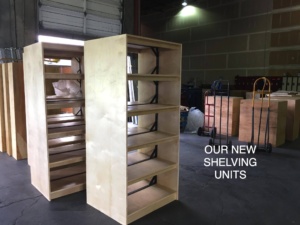
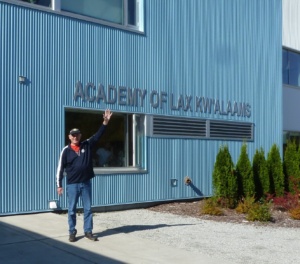 The school will also have designated learning areas for home economics, industrial arts and cultural activities. All classrooms are well laid out, flexible to use, and have taken into account the needs of learners today, including electronic and spatial needs, as well as the relationship between teacher and student. There are also central gathering spaces connected to other common social areas, and quiet spaces to allow for more intimate learning opportunities.
The school will also have designated learning areas for home economics, industrial arts and cultural activities. All classrooms are well laid out, flexible to use, and have taken into account the needs of learners today, including electronic and spatial needs, as well as the relationship between teacher and student. There are also central gathering spaces connected to other common social areas, and quiet spaces to allow for more intimate learning opportunities.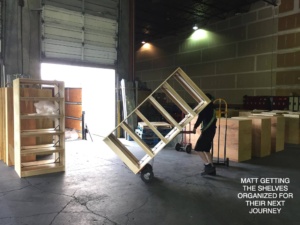
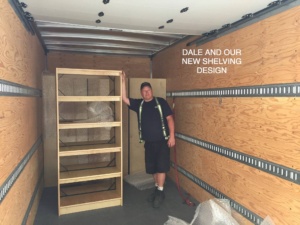
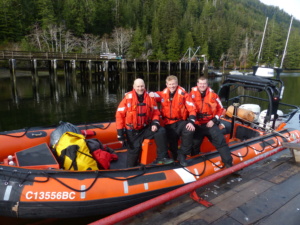
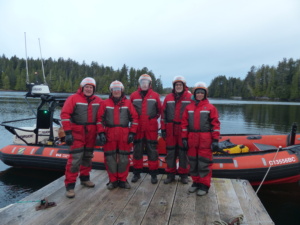
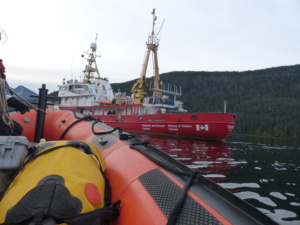 Along the way the W2R team was offered a quick visit onboard the Tanu and to meet the 15-member crew. Search and Rescue is an important aspect of the member’s work. The Tanu maintains close relationships with First Nations along the coast. Often the First Nations communities are the first to react to a sinking or other emergency. When a whale watching vessel sank off Tofino, it was the First Nations skippers who responded first. When the BC Ferries Queen of the North sank near Hartley Bay, it was local villagers who were first on the scene.
Along the way the W2R team was offered a quick visit onboard the Tanu and to meet the 15-member crew. Search and Rescue is an important aspect of the member’s work. The Tanu maintains close relationships with First Nations along the coast. Often the First Nations communities are the first to react to a sinking or other emergency. When a whale watching vessel sank off Tofino, it was the First Nations skippers who responded first. When the BC Ferries Queen of the North sank near Hartley Bay, it was local villagers who were first on the scene.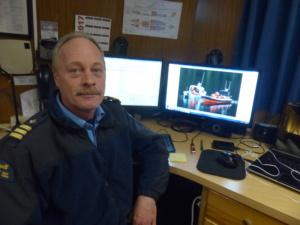 The Coast Guard joins the RCMP, BC Ferries, Britco Structures, Telus, Bandstra, Rotary District 5040, Windsor Plywood, Nanaimo Correctional Centre and numerous small businesses as a member of the Write to Read team.
The Coast Guard joins the RCMP, BC Ferries, Britco Structures, Telus, Bandstra, Rotary District 5040, Windsor Plywood, Nanaimo Correctional Centre and numerous small businesses as a member of the Write to Read team.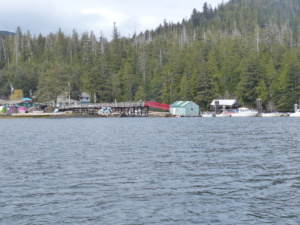 Here’s what Wikipedia says about the little village of Kyquot: The Kyuquot/Cheklesath First Nation (officially Ka:’yu:’k’t’h’/Che:k:tles7et’h’ First Nation) is a First Nations government based at Kyuquot, located on the outer coast of Kyuquot Sound, on the west coast of Vancouver Island in British Columbia, Canada. It is a member of the Nuu-chah-nulth Tribal Council.
Here’s what Wikipedia says about the little village of Kyquot: The Kyuquot/Cheklesath First Nation (officially Ka:’yu:’k’t’h’/Che:k:tles7et’h’ First Nation) is a First Nations government based at Kyuquot, located on the outer coast of Kyuquot Sound, on the west coast of Vancouver Island in British Columbia, Canada. It is a member of the Nuu-chah-nulth Tribal Council.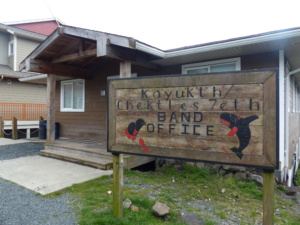 Here is what the Canadian Encyclopedia says about Kyquot: The Kyquot/Cheklesath First Nation, located on the outer coast of Kyquot Sound, on the west coast of Vancouver Island in British Columbia, Canada. As of 2015, the two nations have a combined membership of approximately 600 people, about 150 of whom live on reserve. Like other Nuu-chah-nulth nations, the Kyquot and Checleseht have a strong ceremonial culture, characterized by feasting and entertainment with song, dance, contests and theatricals. They are also known for their stunning woodwork, including canoes, totem poles, multifamily houses and other products hand-crafted out of fine cedar, such as baskets.
Here is what the Canadian Encyclopedia says about Kyquot: The Kyquot/Cheklesath First Nation, located on the outer coast of Kyquot Sound, on the west coast of Vancouver Island in British Columbia, Canada. As of 2015, the two nations have a combined membership of approximately 600 people, about 150 of whom live on reserve. Like other Nuu-chah-nulth nations, the Kyquot and Checleseht have a strong ceremonial culture, characterized by feasting and entertainment with song, dance, contests and theatricals. They are also known for their stunning woodwork, including canoes, totem poles, multifamily houses and other products hand-crafted out of fine cedar, such as baskets.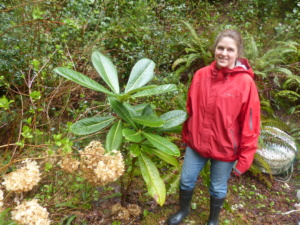 You won’t find Kyquot on most maps. The tiny community is hidden away on the far northwest coast of Vancouver Island. It’s only accessible by water taxi. The remoteness has some fortunate features, including tourism. Fishing is excellent, which means there are several fine (expensive) lodges. The waters near the villages are awash with “rafts” of sea otters, floating sweetly among kelp beds.
You won’t find Kyquot on most maps. The tiny community is hidden away on the far northwest coast of Vancouver Island. It’s only accessible by water taxi. The remoteness has some fortunate features, including tourism. Fishing is excellent, which means there are several fine (expensive) lodges. The waters near the villages are awash with “rafts” of sea otters, floating sweetly among kelp beds. 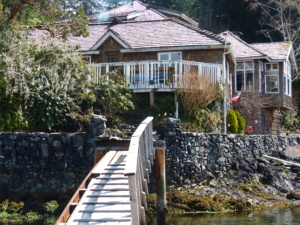 Over the years the Plensky family grew, and so did their house. From time to time they put up passengers from the freight vessel
Over the years the Plensky family grew, and so did their house. From time to time they put up passengers from the freight vessel 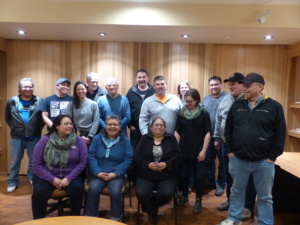 It started off as a library, and then grew like a giant cedar tree. A big group of Write to Read volunteers drove to the very remote village of Kyquot in early April to make a survey. They came back satisfied they have the skills and experience to create what is being billed as The Big Project. The library designed to improve aboriginal literacy has become a full-fledged Learning Centre, part of a Community Centre, which will be located right next to a new Big House. A $50,000 project has evolved into a $5 million project. It may be the model for many more similar projects to come.
It started off as a library, and then grew like a giant cedar tree. A big group of Write to Read volunteers drove to the very remote village of Kyquot in early April to make a survey. They came back satisfied they have the skills and experience to create what is being billed as The Big Project. The library designed to improve aboriginal literacy has become a full-fledged Learning Centre, part of a Community Centre, which will be located right next to a new Big House. A $50,000 project has evolved into a $5 million project. It may be the model for many more similar projects to come.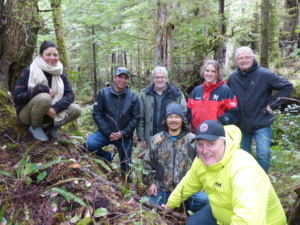 The W2R team toured the village with architect Scott Kemp and it was decided the original site for the planned library was too close to sea level and at threat from any tsunami. An alternative site had been scoped out, so the entire team trudged up the hill past the school to the site of a planned new sub-division. The engineers decided an up close inspection was required and the entire team bushwhacked into virgin forest, where the biomass underneath was 10-feet deep.
The W2R team toured the village with architect Scott Kemp and it was decided the original site for the planned library was too close to sea level and at threat from any tsunami. An alternative site had been scoped out, so the entire team trudged up the hill past the school to the site of a planned new sub-division. The engineers decided an up close inspection was required and the entire team bushwhacked into virgin forest, where the biomass underneath was 10-feet deep.